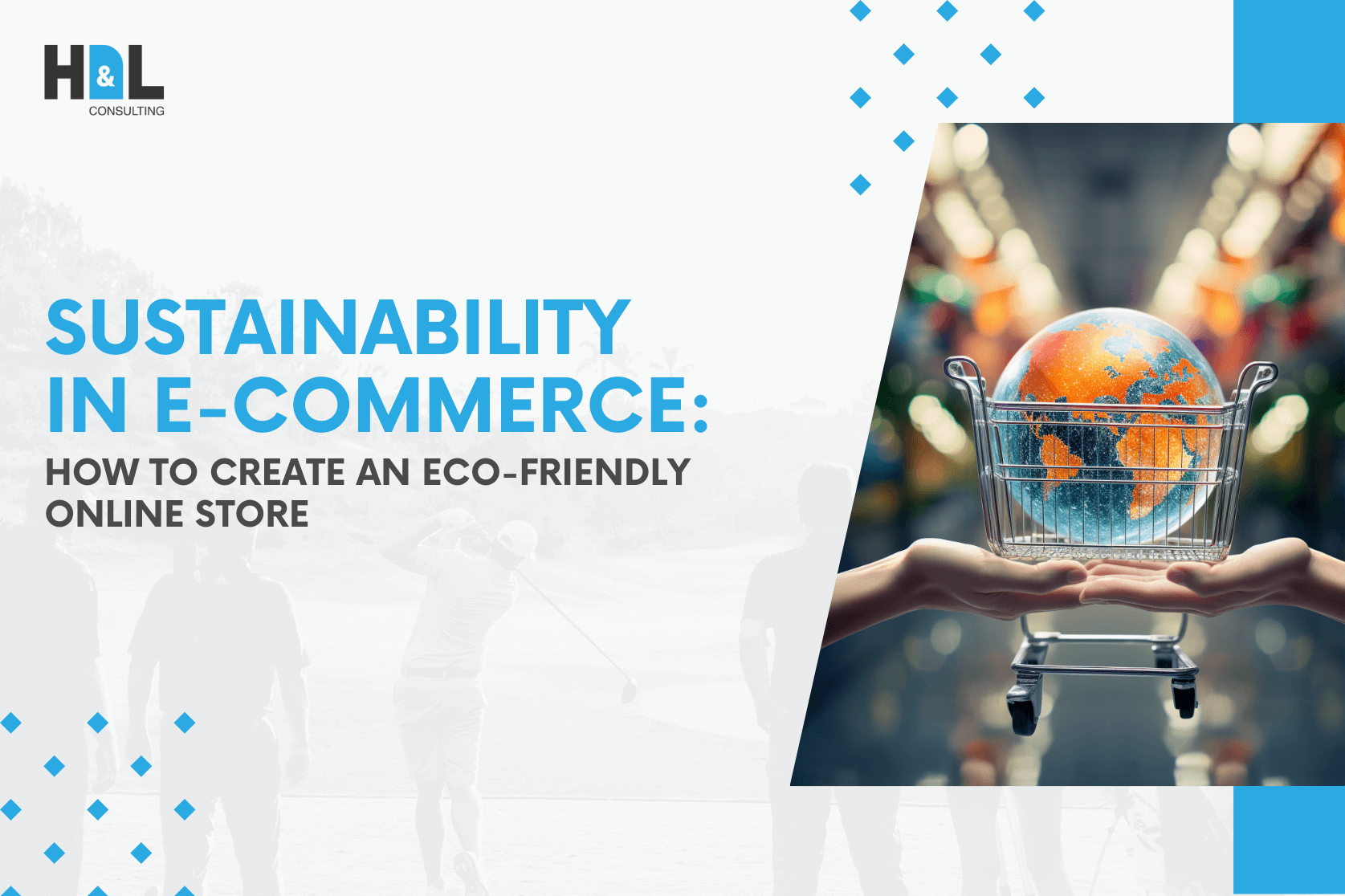As e-commerce booms across the globe, there comes an increasing demand for companies to establish mechanisms for the purpose of sustainability. Customers are being more ecologically sensitive to the kind of products they buy; as such, online stores are under compulsion to be eco-friendly. In this blog, we will look at some key levers to employ in implementing sustainability within your online store-from green packaging and carbon-neutral shipping to responsible sourcing and energy-efficient operations.
1. Eco-Friendly Packaging
One of the most immediate and palpable ways an e-commerce enterprise would be able to become sustainable is through eco-friendly packaging. The rampant use of plastic in the packaging of e-commerce has engendered growing concern about waste, and consumers are no longer so intimidated by perceived alternative brands that set a premium on sustainability.
Biodegradable packaging: The use of biodegradable bubble wraps, paper, and recycled cardboards ensures that whatever will be disposed of can biodegrade without polluting the environment. Compostable packaging is another alternative for businesses looking to reduce waste.
Minimal packaging: This would involve the use of the least possible size of packaging that may accommodate the actual product. This will greatly reduce materials used, cutting down shipping costs. Minimalist packaging does not only cut down on waste but also enhances the experience of the customer by avoiding unnecessary bulk.
Recycled and Recyclable Materials: The use of recycled materials for packaging, along with the assurance that the packaging is recyclable by customers after use, is another step to make the brand sustainable. Encourage customers to reuse packaging where possible or provide recycling programs to help them dispose of products responsibly.
2. Carbon-Neutral Shipping
One of the largest contributors to an e-commerce store’s carbon footprint is shipping. Offering methods of carbon-neutral shipping can reduce the environmental impacts further in delivery.
Carbon Offset: Similarly, partnering with a carbon offset program can balance out the carbon emissions created by shipping. These programs will calculate the number of emissions that result from each delivery and invest in projects like reforestation or renewable energy projects to offset those effects.
Local Warehousing: Placing the warehouses closer to your customers reduces the distance the products would cover, consequently reducing transport emissions. This helps not only in lowering the carbon output but also in shortening the delivery time.
Eco-Friendly Delivery Services: More recently, some courier services offer eco-friendly alternatives, such as electric trucks, while others are using bicycles for urban delivery areas. A tie-up with such green delivery service providers could mean your word of commitment toward green sustainability.

3. Sustainable Sourcing and Ethical Supply Chains
There is a growing concern for consumers about the origin of the products they purchase and how these products are sourced, along with the ethics behind their production.
Fair Trade and Ethically Sourced Products: Ensuring that materials within your products are sourced responsibly, providing a fair wage for workers. Ethical sourcing practices prevent the destruction of the environment and labor exploitation in material production, therefore allowing your target market of socially conscious consumers.
Supply Chain Transparency: People want transparency in supply chains; what this means is that a brand should be open about where materials come from, how they are produced, and what a business is doing to make the supply chain sustainable.
Eco-friendly product lines can involve the introduction of organic clothes, zero-waste products, and any other sustainable home goods that would reach the fast-growing numbers of environmentally conscious consumers. Also, showing such products in-store and communicating their benefits will go a long way to influencing sales and your brand as a force for good.
4. Energy-Efficient Operations
Sustainability is not only about packaging and shipping but also in how your business operates daily. There are many ways to make the operations of your e-commerce store energy-efficient, thus trimming your overall environmental footprint.
Green Web Hosting: Having your website run on green servers, which draw energy from renewable sources, would mean going green for your online operations too. Today, many web hosting companies provide eco-friendly options running on solar or wind energy.
Sustainable Office Practices: If your e-commerce business operates from an office, consider how you can help reduce energy consumption. You may be able to lower your carbon footprint with energy-efficient lighting, programmable thermostats that raise and lower the temperature according to a scheduled set point, and more frequent work-from-home arrangements.
Reduce waste in warehousing: Ensure your warehouses follow eco-friendly practices in terms of reducing waste, recycling, and energy-efficient systems for heating, cooling, and lighting. Installation of solar panels in warehouses or using renewable sources of energy will help go further in reducing energy consumption.
5. Promote Sustainability to Customers
Of course, adding sustainable practices to your business is important, but sometimes businesses forget how important it is to communicate those practices to their customers. Transparency builds trust and loyalty, especially for eco-conscious shoppers.
Highlight Sustainable Practices: Showcase your sustainability on your website-either through a dedicated sustainability page or just some simple eco-friendly labels attached to your offerings. Let your customers know about the environmental benefits of your packaging, shipping, and sourcing so customers can easily justify spending money to support your cause.
Offer incentives for greener choices. For instance, provide discounts on orders with minimal packaging or offer shipping options that are carbon neutral. You can build up some programs offering points when packaging is returned for recycling.
Educate through Content: Through your blogging, social media, and even email marketing, educate your customer about why sustainability matters. This is a great way to share ideas on how they can reduce their impact on the earth while telling a story of how your brand is making a difference. This is how you build a community of customers highly interested and involved in your mission.

Final Thoughts
It’s not just about following the latest trends, creating a sustainable e-commerce store means future-proofing your business for consumers who are increasingly demanding greener products and methods. Adding sustainability to your online store will drive customer loyalty, cut costs, and preserve the environment. Now from using eco-friendly packaging to carbon-neutral shipping, taking ethical sourcing into consideration, and making energy-efficient operations, here is how you can build a greener business in 2024 and beyond.
If you are looking for an experienced IT provider, H&L Consulting is the best option. With years of experience, we specialize in mobile app development, web app development, staff augmentation, and robot process automation. Our staff of over 30 highly qualified IT consultants and developers can handle projects of any scale. We are committed to supporting your goals after successfully delivering over 50 solutions to clients throughout the world. Contact us for a full discussion, knowing that H&L Consulting is prepared to fulfill all your IT demands with specialized, effective solutions.









